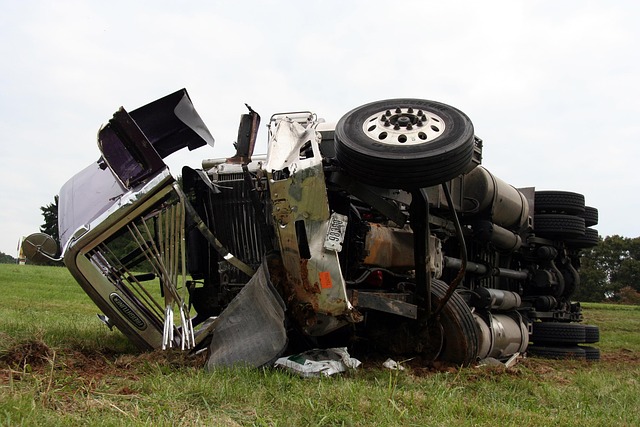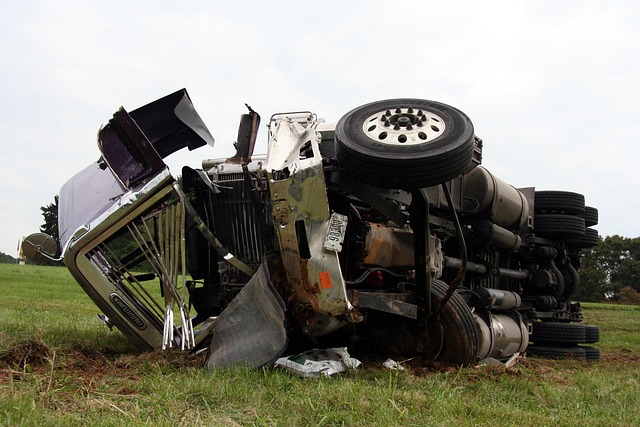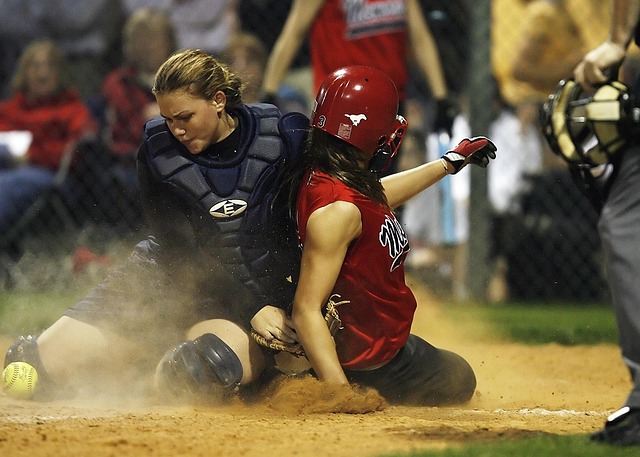Collision coverage is a critical component of auto insurance, protecting policyholders from financial burdens resulting from vehicular accidents by covering repairs or replacements. While often mandated for financed vehicles, understanding its scope and exclusions—including wear and tear and fault-based incidents—is essential. Different types of collisions require tailored coverage, with cost varying based on car details and driving history. Effective collision management involves navigating claims processes, utilizing defensive driving techniques, and comparing policy deductibles and limits. Legal obligations post-accident include stopping at the scene and exchanging insurance details; collision coverage helps manage financial risks by covering repairs and may offer rental car compensation. Additional coverage options like comprehensive and medical payments expand protection against diverse incidents, while roadside assistance services provide peace of mind for vehicle troubles.
“In today’s bustling world, unexpected collisions on the road are not uncommon. Understanding collision coverage is crucial for every vehicle owner. This comprehensive guide delves into the intricacies of collision protection, explaining what it covers and what lies beyond its scope. From accidental meet-ups to prevention tips, we explore types of collisions and the legal obligations involved in repairs. By comparing policies and considering additional coverage options, you can ensure your peace of mind on the road. Discover how collision coverage affects premium costs and learn a step-by-step claims process. Navigate through this article for an informed decision regarding your vehicle’s safety.”
Understanding Collision Coverage: What It Covers and Exclusions

Collision coverage is a crucial aspect of auto insurance that protects policyholders from financial loss in case of a vehicular accident. It pays for repairs or replacement of your vehicle when it’s damaged in a collision with another object, including other vehicles, objects like trees or utility poles, or even pedestrians. This coverage is often a requirement when financing a car purchase, as lenders typically insist on having collision insurance to safeguard their investment.
However, it’s essential to understand the scope and limitations of this coverage. Collision insurance generally does not cover damage caused by wear and tear, normal aging, rust, or mechanical failures. It also excludes instances where the policyholder is at fault for the accident, unless they have added a specific “uninsurable” clause to their policy. Additionally, certain high-risk vehicles or those used for commercial purposes may face higher premiums or require different types of coverage.
Types of Collisions: Accidental Meet-ups on the Road

When it comes to car damage and collision protection, understanding different types of collisions is crucial. Accidental meet-ups on the road can take various forms, from rear-end crashes to side impact collisions. Each scenario has its own set of challenges and potential for damage. Collision coverage, a key component in auto insurance policies, plays a vital role in mitigating these risks.
This coverage helps cover the costs associated with repairs or replacements following such incidents. Whether it’s a fender bender or a more severe collision, having adequate collision coverage can ensure that you’re protected financially and can get your vehicle back on the road faster.
The Importance of Collision Insurance in Your Policy

In today’s world, where road accidents are a common occurrence, having collision insurance as part of your auto policy is more than just a consideration—it’s a necessity. Collision coverage protects you from financial strain in the event of a crash, whether it’s a minor fender bender or a severe accident. This type of insurance helps cover the costs of repairing or replacing your vehicle, offering peace of mind knowing that unexpected incidents won’t leave you with a hefty repair bill.
Collision coverage is tailored to safeguard your investment in your vehicle. It recognizes that accidents happen and provides a safety net to ensure you can get back on the road safely and affordably. By including collision insurance in your policy, you’re not just insuring your car; you’re ensuring your financial stability and security in an unpredictable driving environment.
How Collision Protection Affects Your Premium Costs

Collision protection, or collision coverage as it’s often referred to, plays a significant role in shaping your auto insurance premium costs. This type of coverage is designed to protect policyholders from financial loss resulting from accidents caused by collisions with other vehicles or objects. When you purchase collision coverage, you’re essentially pre-paying for potential repairs or replacement of your vehicle should an accident occur. Insurance companies consider this a risk mitigation measure, and as such, it directly impacts your premium calculations.
The cost of collision coverage is determined by several factors, including the make and model of your car, its age, your driving history, and the amount of coverage you choose. Typically, collision coverage is optional, but many lenders require it if you have a loan or lease on your vehicle. Including this protection in your policy can increase your premiums, but it offers peace of mind knowing that unexpected collisions won’t leave you with a substantial out-of-pocket expense for repairs.
Claims Process: A Step-by-Step Guide to Filing a Claim

When you’re dealing with car damage after a collision, navigating the claims process can seem daunting. However, understanding the steps involved can help you file a claim efficiently and ensure you receive fair compensation for your vehicle repairs or replacement. Here’s a step-by-step guide to filing a claim for car damage from a collision.
1. Assess the Damage: The first step is to thoroughly inspect your vehicle to identify all damage caused by the collision. Take photos of any visible damage, both internally and externally, as these will be crucial when filing your claim. Also, check for any mechanical or electrical issues that may have resulted from the accident.
2. Notify Your Insurance Company: Contact your insurance provider as soon as possible after the incident to report the collision. They will provide you with a claims number and guide you on the next steps. Be prepared to share all relevant details about the accident, including the date, time, location, and any personal information required for the claim.
3. Gather Necessary Documents: Collect important documents that will be needed to support your claim. This includes your driver’s license, vehicle registration, proof of insurance, and a police report if one was filed at the scene. Additionally, keep records of all repair estimates or invoices from any work done on your vehicle.
4. File Your Claim: Fill out the claim form provided by your insurance company accurately and completely. Provide detailed descriptions of the damage and include the photos you took earlier as evidence. Make sure to follow the instructions provided by your insurer, including any deadlines for submitting the form.
5. Communicate Regularly: Maintain open lines of communication with your insurance representative throughout the claims process. Keep them updated on any new developments or repairs that may affect your claim. This will help ensure a smoother and faster resolution.
Common Causes of Vehicle Collisions and Prevention Tips

Vehicle collisions can occur due to a variety of factors, many of which are preventable with the right precautions and awareness. Some common causes include driver distraction, such as using mobile phones or adjusting settings while driving, leading to delayed reaction times. Another significant cause is speeding, which reduces the time available to react and increases the impact force in case of a collision. Impaired driving, whether due to alcohol or drugs, severely impairs judgment and coordination, making accidents more likely.
To prevent these collisions, it’s crucial to practice defensive driving techniques like maintaining a safe following distance, keeping eyes constantly on the road, and anticipating potential hazards. Regular vehicle maintenance is also vital; poorly maintained cars can have mechanical failures that lead to accidents. Ensuring proper tire pressure, brake functionality, and clear visibility through well-maintained windows and headlights significantly reduces collision risk. Additionally, adhering to traffic rules and regulations, including speed limits and signaling intentions, fosters a safer driving environment. Collision coverage, often provided through insurance policies, plays a critical role in mitigating financial burdens resulting from such incidents.
Comparing Policies: Understanding Deductibles and Limits

When comparing collision coverage policies, understanding deductibles and limits is crucial. Deductibles represent the out-of-pocket expense you agree to pay for repairs before insurance kicks in, while limits define the maximum amount your policy will cover for specific types of damage. Lower deductibles mean higher premiums, but they also provide more financial protection during collisions. Conversely, higher deductibles can lower monthly costs, but you’ll be responsible for a larger portion of repair bills out of pocket.
Evaluating collision coverage involves balancing these factors based on your driving habits and vehicle value. If you’re prone to frequent fender benders, opting for a lower deductible might be wise to avoid substantial out-of-pocket expenses. Conversely, if you drive cautiously and own an older, less valuable car, a higher deductible policy could save you money without sacrificing significant coverage.
Legal Obligations and Collision Repairs: What You Need to Know

When involved in a car accident, understanding your legal obligations and the process of collision repairs is crucial. In many jurisdictions, drivers are legally required to stop at the scene of an accident, exchange insurance information with other parties involved, and seek medical attention if necessary. Failure to do so can result in fines or legal repercussions.
Collision coverage, provided by your auto insurance policy, plays a significant role in mitigating the financial impact of accidents. It helps cover the costs of repairs for your vehicle and, in some cases, may include compensation for rental cars while yours is being repaired. The specifics of collision coverage vary between insurance providers, so reviewing your policy to understand what’s included and any deductibles associated with it is essential before initiating collision repair procedures.
Enhancing Protection: Additional Coverage Options to Consider

When it comes to protecting your vehicle from unexpected collisions, the standard collision coverage provided by your auto insurance policy is a good starting point. However, enhancing your protection with additional coverage options can offer peace of mind and financial security in case of an accident. Consider options like comprehensive coverage, which covers damage from events beyond your control such as theft, vandalism, or natural disasters, in addition to collision damage.
Other valuable add-ons include medical payments coverage, which helps cover the cost of injuries sustained by you or your passengers, and roadside assistance services that provide help when you’re stranded due to vehicle trouble. These additional coverage options can significantly improve your overall protection, ensuring that you’re prepared for a wide range of potential incidents on the road.
